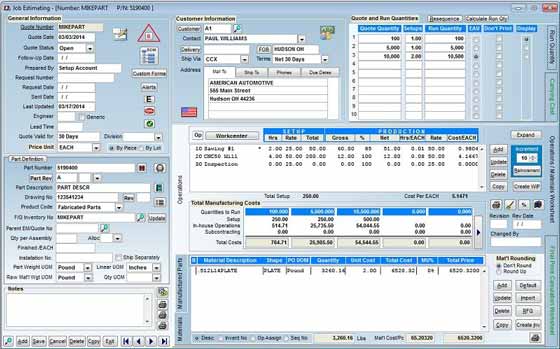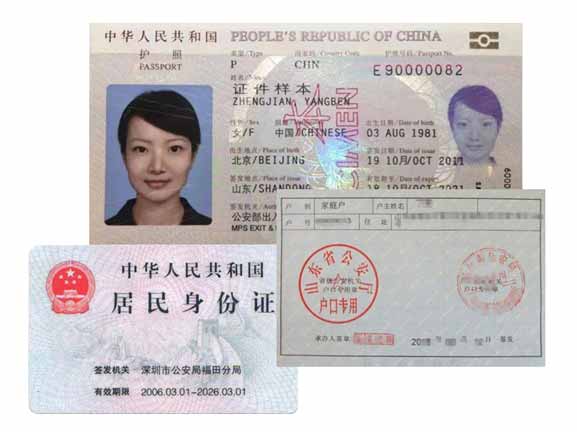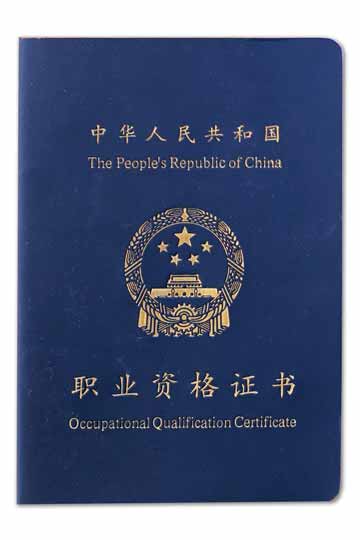翻译案例
翻译语种
联系我们
邮箱:liwei@bowwin.com
手机:+86-18565641179
电话:+86-755-8304 2538
地址:深圳市福田区彩田路彩虹新都彩霞阁23A
英文
英文
译
中文
Transformer Power Supply and Filter
变压器供电和滤波器
译者:佚名
We know that ac power can be changed to dc power, But the dc output of the rectifier circuit was not a pure direct current-it was a pulsating direct current. These pulsations are known as the ac component of the rectifier output. Later we see that a “ripple” seems to “ride “on the dc output of a power supply filter. This is called the ac component. Also electronic circuitry usually requires a pure, unvarying dc supply. To obtain this pure dc supply .To obtain this pure dc supply, filter circuit must be attached to the rectifier. A filter circuit filters out the pulsation (accomponent ,or ripple).There are a number ofdifferent filter circuits, each using a different arrangement of two components which produces filtering of the pulsating dc supply. These two components are the capacitor and inductor. The ability of the capacitor to act as a filter is related to its capacitance and reactance. The larger the capacitor, the better the filtering action attainable. The filtering action of a choke is related to its inductance. As with the capacitor, the larger its reactance and inductance, the better the filtering action.
Fig.6-1 (a) full-wave power supply with simple capacitor Filter ;(b)full-wave rectifier output ,unfiltered The simplest possible power supply filter is the single capacitor shown in Fig.6-1
In Fig.6-1 we realize that ehere is an outout pulse across RL for each half-cycle of input.The unfiltered rectifier output waveform is deawn in Fig.6-1(b).Capacitor C1 is connected across the rectifier output and charges to the peak input pulse voltage. When it is charged as shown in FIG.6-1, the cathodes of D1and D2 are positive and reverse-biased. There is no path for capacitor discharge except through its own leakage or RL. So C1 maintains most of its charge, and D1 and D2 are cut off. As RL uses current from the capacitor, its voltage drops. As this voltage drops,D1and D2 conduct again, allowing C1 to recharge. The recharging replaces the small charge lost by C1 during the time when there was no out put rrom the rectifier, as in Fig.6-1.In this way the filter capacitor C1 stays charged to approximately the peak input voltage. The goal of any filter system is to maintain this voltage so there is no discharge during intervals when the diodes are not conducting. Of course, theirs is impossible for there is always some amount of baritone or ripple, in the output , eventhough it may be on the order of some millivolts. The amount of output voltage variation, or ripple, depends on the size of the capacitor and the size of the load. If RL is small in value, more current can flow from the capacitorduring the diode nonconducting interval. Thus C1 must be large enough to supply operating current to the load without discharging moue than a few millivolts. Likewise , C1 must have a large capacitance value is order to provide operating current for the load when D1 and D2 are not conducting. If C1 is too small, it discharges during the D1and D2 nonconducting in terval, and more output ripples result.
Fig.6-1 (a) full-wave power supply with simple capacitor Filter ;(b)full-wave rectifier output ,unfiltered The simplest possible power supply filter is the single capacitor shown in Fig.6-1
In Fig.6-1 we realize that ehere is an outout pulse across RL for each half-cycle of input.The unfiltered rectifier output waveform is deawn in Fig.6-1(b).Capacitor C1 is connected across the rectifier output and charges to the peak input pulse voltage. When it is charged as shown in FIG.6-1, the cathodes of D1and D2 are positive and reverse-biased. There is no path for capacitor discharge except through its own leakage or RL. So C1 maintains most of its charge, and D1 and D2 are cut off. As RL uses current from the capacitor, its voltage drops. As this voltage drops,D1and D2 conduct again, allowing C1 to recharge. The recharging replaces the small charge lost by C1 during the time when there was no out put rrom the rectifier, as in Fig.6-1.In this way the filter capacitor C1 stays charged to approximately the peak input voltage. The goal of any filter system is to maintain this voltage so there is no discharge during intervals when the diodes are not conducting. Of course, theirs is impossible for there is always some amount of baritone or ripple, in the output , eventhough it may be on the order of some millivolts. The amount of output voltage variation, or ripple, depends on the size of the capacitor and the size of the load. If RL is small in value, more current can flow from the capacitorduring the diode nonconducting interval. Thus C1 must be large enough to supply operating current to the load without discharging moue than a few millivolts. Likewise , C1 must have a large capacitance value is order to provide operating current for the load when D1 and D2 are not conducting. If C1 is too small, it discharges during the D1and D2 nonconducting in terval, and more output ripples result.
大家都知道,交流电可以转换成直流电。但是整流器的输出并不是纯粹的直流,而是脉动直流。其实这些波动成分是整流电路输出的交流分量。后来我们发现电源滤波器的直流输出中叠加有纹波,这种纹波也称为交流分量。通常电子电路中需要稳定不变的直流电源。为了获得稳定不变的直流电,整流电路中必须附加滤波器。因为滤波电路会滤掉脉动成分(交流分量,或纹波)。目前有许多不同的滤波电路,主要利用两种不同元件来达到滤波效果。这两种元件是电容器和电感。电容器的滤波效果与它的电容量和容抗有关。电容器越大,滤波效果越好。电感线圈的滤波效果与它的电感量和感抗有关。与电容一样,电抗和电感越大,滤波效果就越好。 最简单可行的滤波电源采用一个电容器,如图6-1所示。
在图6-l中我们发现在输入回路每半波内 RL两端均有波形输出。图 6-1(b)给出了未加滤波器的整流电路输出波形。若将电容C1接于整流电路的输出瑞,它可以充电到输入电压峰值、如图6-1所示,此时C1和C2的阴极为贫,呈现反偏。除了本身的泄漏和RL外,电容器再无效电途径。所以CI贮存了大量也荷,而D1和D2处于截止状态,位于电容器向RL放电。它的电压波形呈下降趋势。当RL两端电压下降时,D1和D2开始导电,C1开始再充电。如图6-1所示,在整流器设有输出电流期间,C1损失的少量充行可在再充电时得到补充。这样滤波电容器C1两端电压大体总保持在输入电压的峰值左右。任何滤波系统的目的都是保持这种电压则保证在二极管截止时本会放电。当然这是不可能的,因为滤波器输出总有一定波动或纹波,此波动或纹波有时仅为几毫伏。 输出电压的波动或波纹的大小与电容器电容量的大小和负荷有关。如果 RL数值小。在二极管不导通期间。电容器的放电电流很大。这样C1容量必须很大才能保证C1为负荷提供运行电流而放电量不超过几毫伏。同样,C1容量必须足够大,才可以保证在D1和D2不导通期间为负载提供运行电流。如果C1容量太小。它在D1和D2不导通期间C1放电很大,会增大输电压的纹波。
在图6-l中我们发现在输入回路每半波内 RL两端均有波形输出。图 6-1(b)给出了未加滤波器的整流电路输出波形。若将电容C1接于整流电路的输出瑞,它可以充电到输入电压峰值、如图6-1所示,此时C1和C2的阴极为贫,呈现反偏。除了本身的泄漏和RL外,电容器再无效电途径。所以CI贮存了大量也荷,而D1和D2处于截止状态,位于电容器向RL放电。它的电压波形呈下降趋势。当RL两端电压下降时,D1和D2开始导电,C1开始再充电。如图6-1所示,在整流器设有输出电流期间,C1损失的少量充行可在再充电时得到补充。这样滤波电容器C1两端电压大体总保持在输入电压的峰值左右。任何滤波系统的目的都是保持这种电压则保证在二极管截止时本会放电。当然这是不可能的,因为滤波器输出总有一定波动或纹波,此波动或纹波有时仅为几毫伏。 输出电压的波动或波纹的大小与电容器电容量的大小和负荷有关。如果 RL数值小。在二极管不导通期间。电容器的放电电流很大。这样C1容量必须很大才能保证C1为负荷提供运行电流而放电量不超过几毫伏。同样,C1容量必须足够大,才可以保证在D1和D2不导通期间为负载提供运行电流。如果C1容量太小。它在D1和D2不导通期间C1放电很大,会增大输电压的纹波。
文化与资讯
-
2022-10-26选择北京翻译公司要注意哪些问题?
-
2021-06-22陪同翻译有哪些注意事项?
-
2021-01-20爱丽丝·门罗:不是“蛮译”是“慢译”
-
2021-01-18翻译公司:只是翻译惹的祸
-
2021-01-03常用网上资源
-
2021-01-03英伦印迹:看我这样享受恬淡留学生活
翻译服务










